Labyrinths: Mustard Seed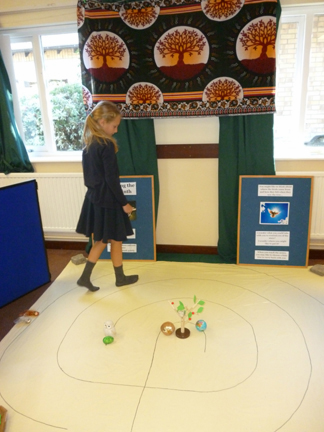 Which story would be best for the children's first experience of walking the labyrinth? At the Sanctum Collective event last summer, we were shown a small personal handsewn labyrinth based on the parable of the Prodigal Son. There were tiny representations of pigs, money bags etc that had symbolic meanings on the way in and different meanings on the way out. Although this would be too complex an idea to use with our children, a parable seemed a good place to start. I chose the parable of the Mustard Seed because it was a relatively short parable and also because most of the children who came to our monthly Footsteps events had already encountered it through Godly Play in school. I also felt that it was rich in symbolism - growing trees, birds, nests - that could help the children engage with the parable. 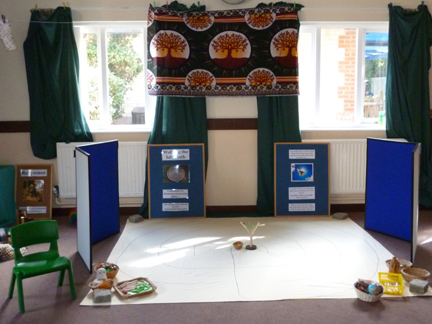 I set the labyrinth out and placed a small "tree" at the centre. Around the side were baskets of extra branches, leaves and berries that could be carried into the labyrinth and added to the tree. We also had baskets of birds, eggs and a miscellaneous basket of other symbols - for example a wooden person, the world, the hand and the child as I didn't want to limit the response to the parable. They could have used things from elsewhere in the room, though no one did. I started the session by telling the Godly Play story of the parable of the Mustard Seed but without asking the wondering questions. Words for the boards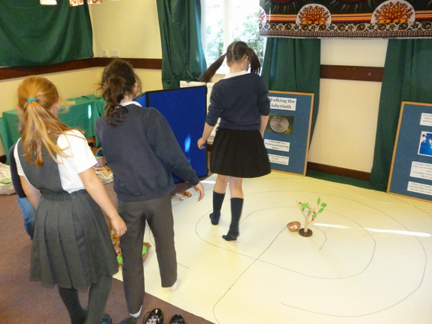 A labyrinth is a thinking and praying place... Take off your shoes and wait to enter Walk the labyrinth quietly You might like to think about where the birds came from and how they felt when they saw the tree... When you reach the centre you may like to choose a little tree to carry back with you I wonder what you could take with you to remind you of the story? I wonder where you might like to put it? 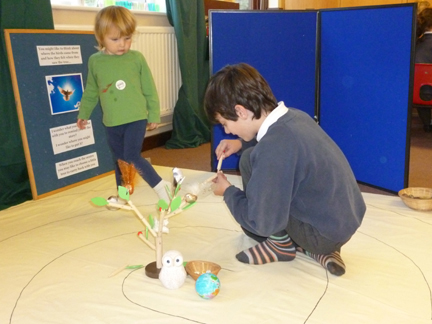 At the centre was a basket of tiny tree buttons and charms for the children to take away. I wanted them to have something tangible to show that they had walked the labyrinth. As well as walking the labyrinth there were opportunities to make bird gliders, decorate little trees, make sandwiches, plant seeds and do leaf printing as well as a free response, either with art materials or with the toys and 3d materials. How well did it work?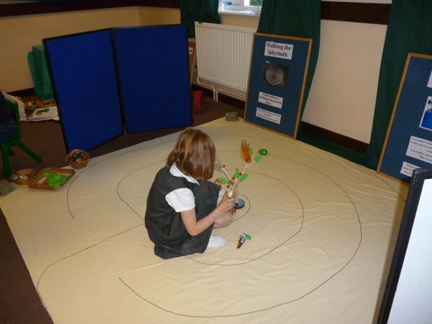 I felt the labyrinth was an activity that could go either way - either everyone would want to walk it or no one would! As it happened every child and most of the adults walked it and several children walked it more than once. A couple of children were so engrossed in other activities that they only walked it after an invitation at the end. Adding to the tree was a particularly popular activity with several children. 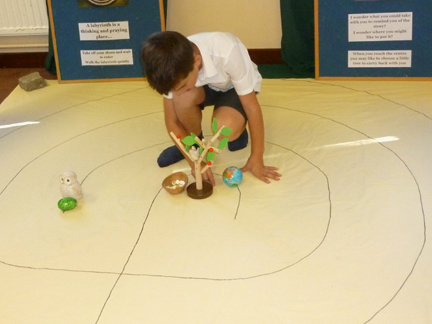 They also took in birds (which they attached to the tree!) and eggs which tended to be placed elsewhere in the labyrinth. One child took the world - I suspected to start with that it was because he could bounce it round, however he spent quite a time in the centre deciding where to put it. Another took a wooden figure - possibly to represent the sower. 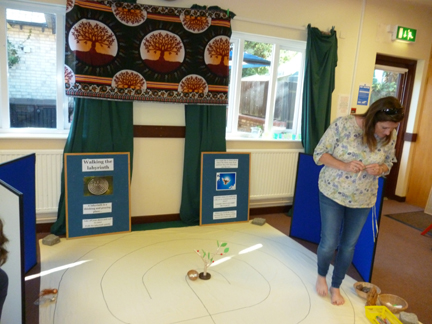 I don't know if anyone used the reflective questions as I left this open and felt it was their choice how they used the labyrinth. I sat with this activity, something I don't often do, as I felt it needed supervision. All the children treated the experience with quiet respect; I'm not sure this would have happened if I hadn't been there. The children were very good about walking back along the paths once they had reached the centre. 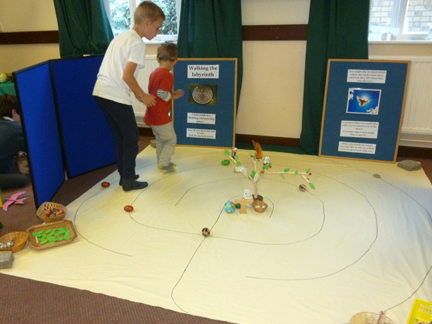 The smallest children (under 5s) started by walking it with an adult or older sibling. The youngest child aged one spent a lot of time in the labyrinth with various bits and pieces. By the end she had grasped the idea that you needed to walk round and round in order to get there even if she didn't follow the paths! I would definitely use the labyrinth again, possibly next time as part of an Advent event. The labyrinth was used during a Footsteps session. Sarah |